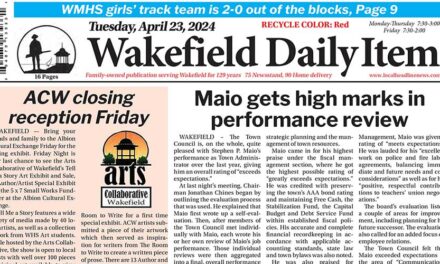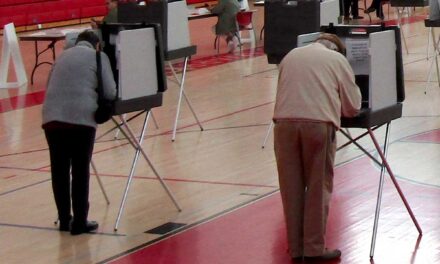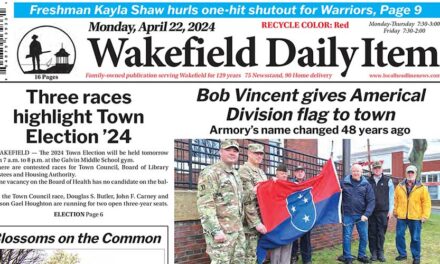By MARK SARDELLA
WAKEFIELD — After the town’s traffic consultant, John Kennedy, outlined his findings and recommendations with respect to the 130-unit Brightview Senior Living facility proposed on Crescent Street, Board of Appeals member Chip Tarbell had one question.
“Based on traffic and parking,” Tarbell asked, “if all of your comments and concerns are answered, would there be any reason you would recommend not building the project?”
“No, there is not,” Kennedy replied.
Kennedy is the international president of the Institute of Transportation Engineers (ITE). Founded in 1930, ITE is an international educational and scientific association of transportation professionals. ITE is also a standards development organization designated by the U.S. Department of Transportation (U.S. DOT). Kennedy is also a senior principal at engineering firm Vanasse Hangen Brustlin Inc. (VHB), where he played a key role in keeping traffic moving throughout Boston’s Big Dig project.
At a ZBA hearing lasting over two hours last night, Kennedy reviewed his analysis of the Brightview traffic and parking plan. The plan, developed for Shelter Development by traffic engineer Jason Plourde of Tighe & Bond, has been the subject of three meetings of the Traffic Advisory Committee since December. TAC chairman Police Lt. Steven Skory flanked Kennedy throughout his presentation.
Kennedy said that the proposed combined assisted living/independent living project would be a less intensive use, traffic-wise, than what is there now. The facility would generate 370 vehicle trips per day, he said, whereas the site as it presently exists (with one office building and six residential homes) generates 640 vehicle trips per day.
Even at peak hours traffic would be less with the Brightview facility than under current conditions, Kennedy said, with morning peak traffic reduced by half and the evening peak cut by one-third.
Kennedy also said that based on his calculations the 84 parking spaces proposed for the lower level garage was an appropriate number and was sufficient to meet the town’s bylaw requirements.
He did have some concerns, Kennedy said, several of which Shelter has already addressed, including the width of the aisles in the parking garage. One of the aisles was only 22 feet wide as opposed the recommended minimum of 24 feet. But Kennedy said that Shelter had adjusted the garage plan and widened the aisle.
Another concern was the width of the garage entrance at only 22 feet, which Kennedy said was “tight.” He recommended widening the entrance to 24-26 feet and eliminating one parking space, cutting parking to a total of 83 spaces, which still meets the required parking space count.
Kennedy also recommended providing a more direct route for Brightview residents to walk to the downtown. Under the current plan, residents would leave via the main doors on Crescent Street. Kennedy proposed an easement from the back of the building leading out to Main Street.
The TAC also recommended a minimum age requirement of 62 for Brightview’s independent living residents, Kennedy said. He noted that if the age were lower, then the calculations for vehicle counts and trip rates would go up as more people would likely still be working and have cars. A Brightview facility in Danvers has such an age restriction, Kennedy said.
Kennedy also discussed parking on Crescent Street. Other than areas where it could impede Brightview’s driveway sightlines, He recommended continuing to allow parking on Crescent Street because parked cars tend to have a “traffic calming” effect, making drivers go slower.
Kennedy made recommendations for the location of crosswalks and suggested a possible reconfiguration of the island at the bottom of Eaton Street. He also recommended requiring Brightview to pay for any new street signage that may be required as a result of the project.
When the hearing was opened to the public, Stanley Kolinsky of 5 Eaton St. insisted that Eaton Street would be a prime location for overflow parking from the Brightview facility. But ZBA members questioned that assumption, noting that the Kennedy did not envision such overflow occurring except on rare occasions.
Ryan Sullivan of 12 Crescent St. said that although peak traffic may be reduced, he expected off-peak traffic in his neighborhood would increase significantly. Kennedy admitted that off-peak traffic may go up “a bit,” but doubted that it would be significant.
David Knudson of 10 Eaton St. said that he worked for the Boston Region Metropolitan Planning Organization, which frequently uses traffic consulting firms like Kennedy’s VHB. He expressed confidence in Kennedy’s conclusions, noting that the ITE standards he employed tend to be conservative as opposed to anecdotal experience.
ZBA chairman David Hatfield read into the record a letter signed by more than 20 residents of the Lincoln School senior housing facility opposing the Brightview project.
Representing Shelter Development and Brightview, attorney Brian McGrail said that they would continue working with Kennedy to comply with his recommendations. In the meantime, he said that his client would work at putting together an Operation and Maintenance Plan for the board to review at its Feb. 25 meeting. He said that if the plan was not ready by then, he would ask for a continuance to the following meeting.
The board continued the hearing to Feb. 25.




